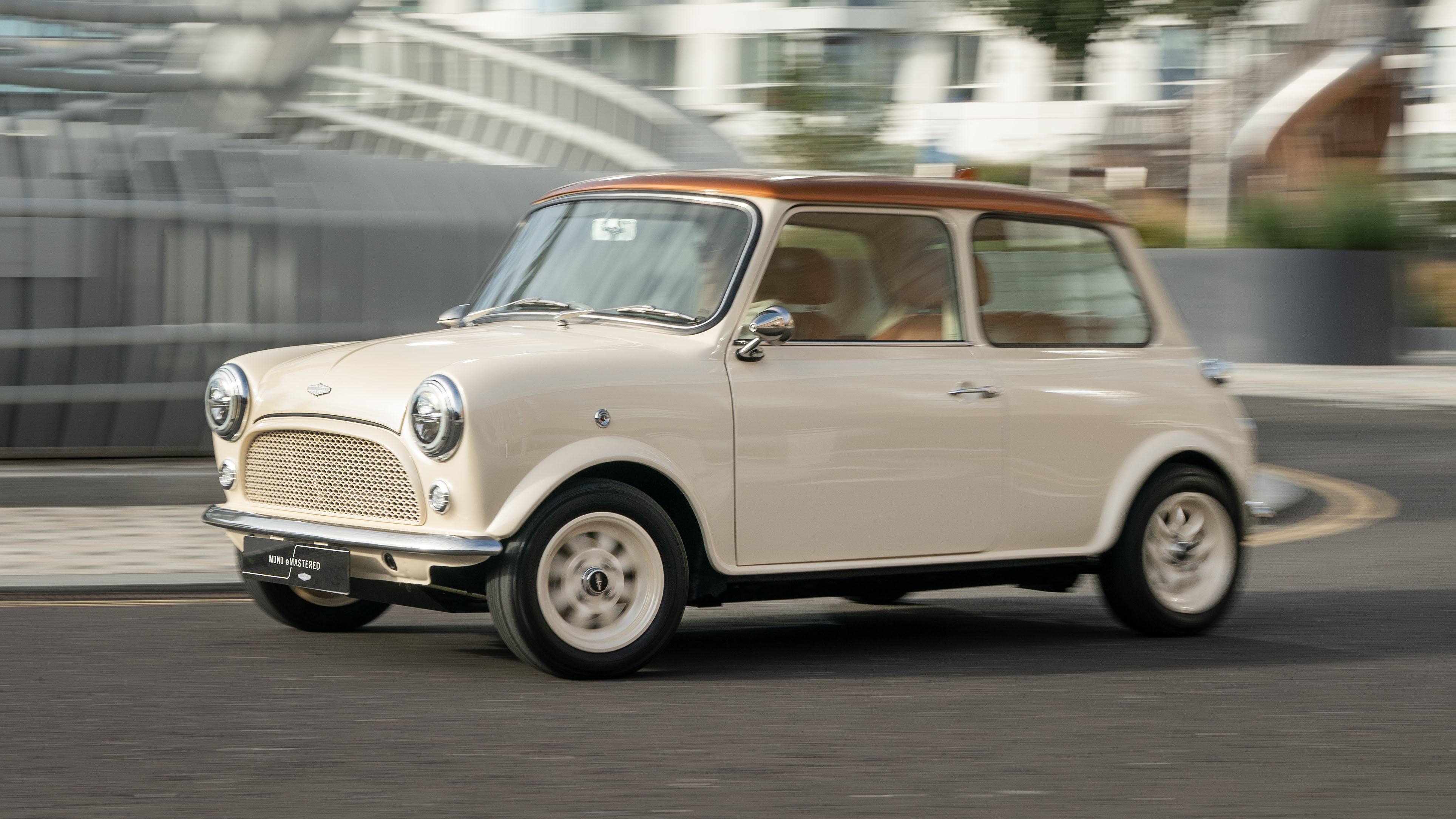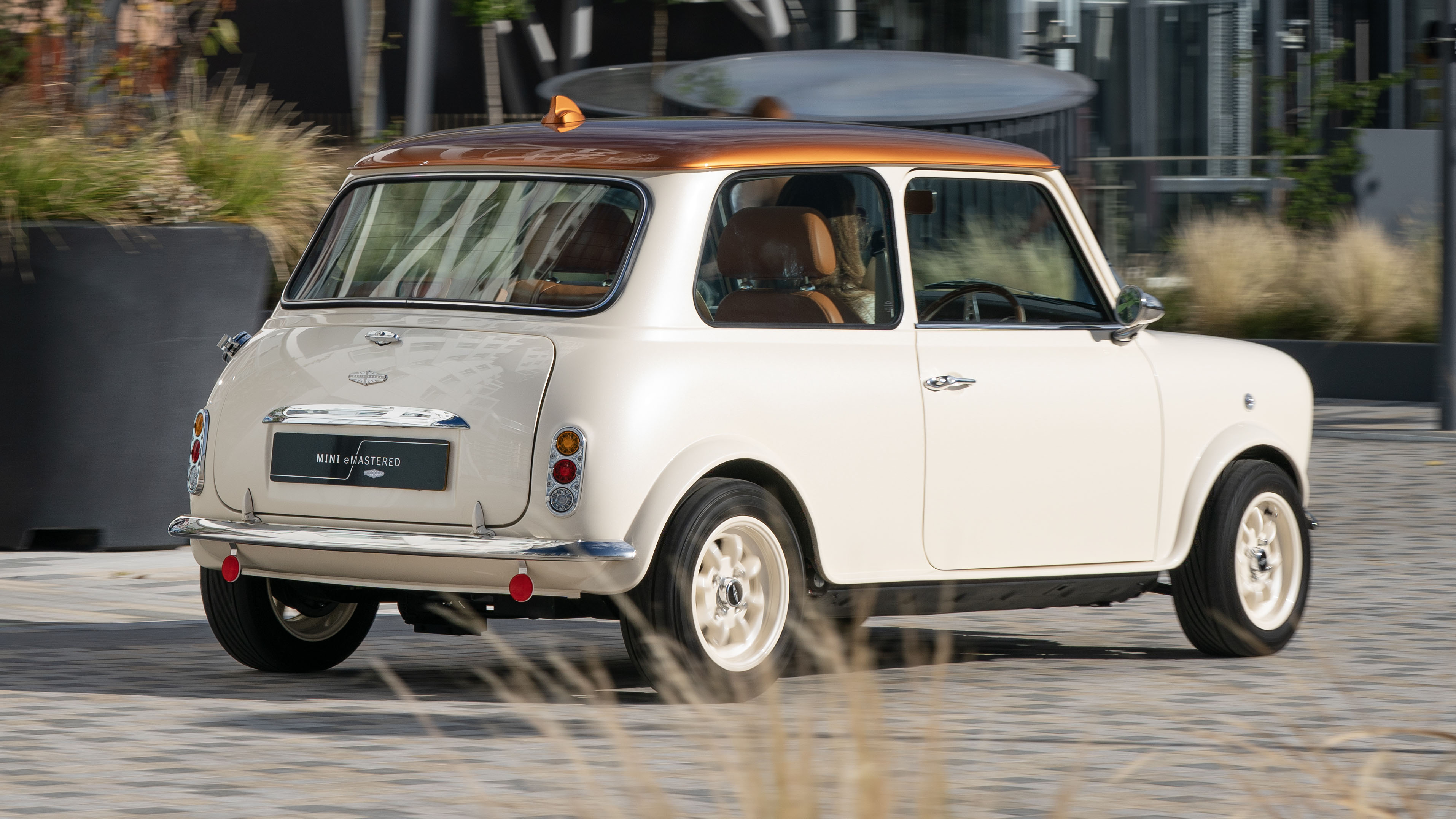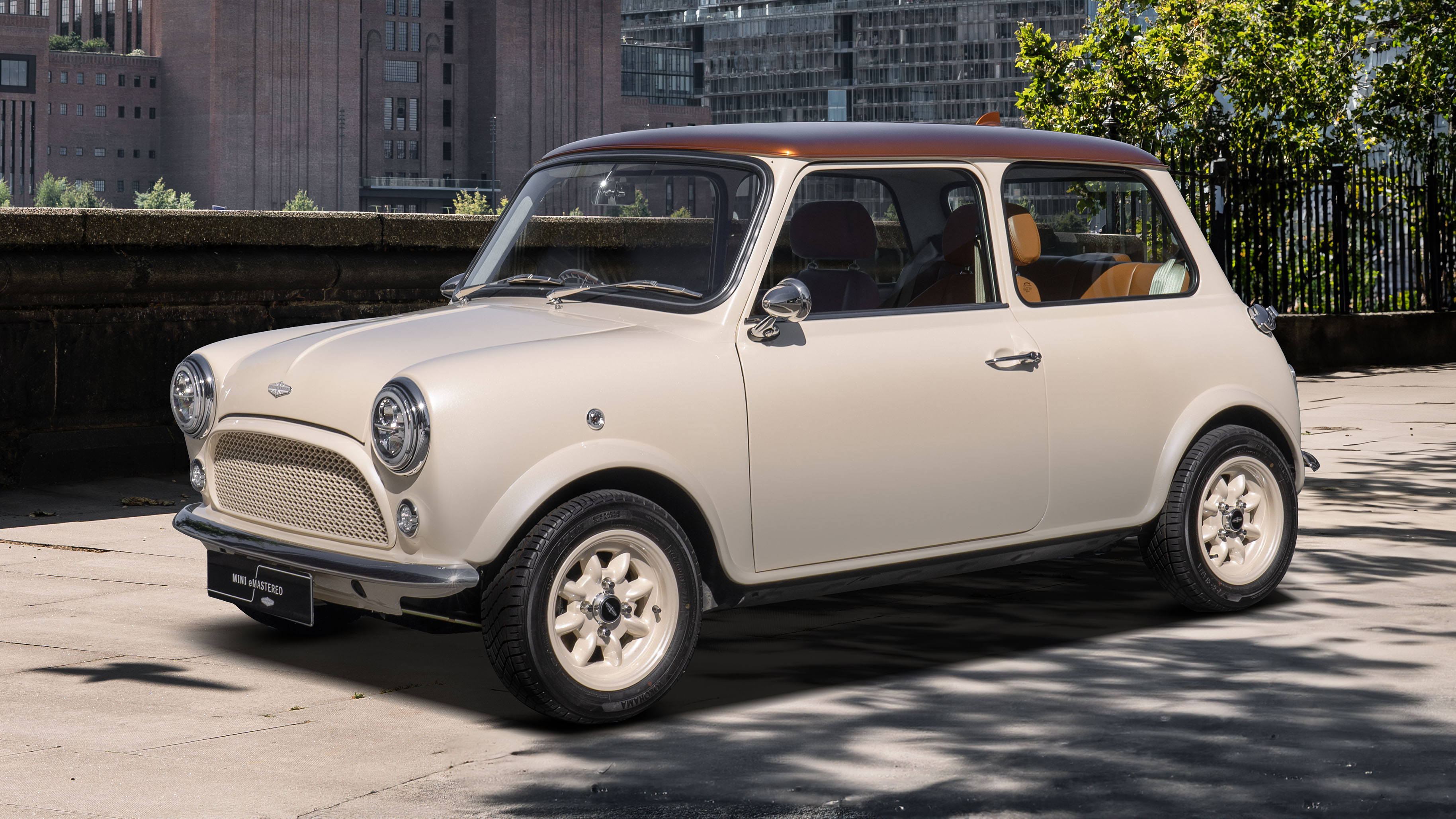
Mini eMastered review: David Brown Automotive's £150,000 electric restomod
£150,000 when new
Wowsers, another expensive electro-mod?
Well as it's a Mini, the more appropriate exclamation might be 'I say guys and gals'. But addressing the substance of the question: it's an electromod, yes. And as original Minis go, an expensive one.
But as beautifully crafted electrified and modernised restos go, this one is cheaper than nearly all others and more practical than many. And since the Mini is better disposed for frequent short trips than long haul ones, it can get by on a small battery. So it represents a much better use of battery minerals than a seldom-driven big-battery counterpart.
OK, just the facts first?
It is, in full, the Mini eMastered by David Brown Automotive. Quite a clever name because they've been doing a petrol Mini Remastered for some time.
The electro part is a turnkey package from Fellten – some (not all) Mini converters use the same package, and it was developed with BMW approval. Think of it the same way as much of the US's restomod industry uses brand-new crate V8s from Chevy, Ford and Dodge.
The motor is 97bhp, and the car is the same weight and weight distribution as the petrol original. So performance is zippy enough, given the original Mini Cooper 1275 injection ended its life at the turn of the millennium with 63bhp and a 0-62 time of 12.2sec. This one is 8.5sec.
The battery is 19kWh, for a WLTP range of 110 miles, and more in town. The fact you get a WLTP economy number shows more professionalism than many conversions. So does the fact it has proper blended regenerative braking. Recharging is AC only, but as it's a small battery, three hours would see you right.
And the rest of the car?
It's built around a brand-new bodyshell from British Motor Industry Heritage Trust, the outfit that remanufactures many old BMC/Leyland parts. Made on original tools, the panels are a bit rough by modern standards. Also, the Mini had sticky-out body seams including a diagonal one down the front wing, and another vertical one at the rear quarter. The e-Mastering (and Remastering) process tightens up the joints and smoothes away these seams. Before painting it's e-coated for corrosion resistance.
The effect is strange: extremely classy, but somehow disconcerting if you're of an age, like me, to be used to original Minis.
Anyway, inside, there's a full re-trim in fancy leather, thick carpet and knurled aluminium, unrecognisable from the cheap vinyl of an original Mini.
A few of the parts are refurbed from an original donor, so it counts as an old car not a new one for tax purposes.
Top Gear
Newsletter
Thank you for subscribing to our newsletter. Look out for your regular round-up of news, reviews and offers in your inbox.
Get all the latest news, reviews and exclusives, direct to your inbox.
Of course you can throw endless custom choices at the paint and leather. Now I like a flat white as much as the next person, but it doesn't follow I'd want a car that, as this one does, looks like it's driven through a vat of the stuff. But I can't argue with the quality of the paint finish.
The sounds and navigation are taken care of by a phone mirroring screen. You get A/C and LED headlights. The dials look like original Smiths jobs, but the one that once showed fuel level now tells a different story. Seats are bigger and more comfy than original Mini bare chairs, but that robs rear space. This is really a two-seater now.
How does it feel?
It keeps most of the good bits of a 1990s Mini. That means a driving position that's odd – upright, with a steering wheel that's angled forward – but actually comfy enough, with a definite sense of attack.
It also means, and I cannot stress this highly enough, tiny size. This thing is 3.05m long and 1.45m wide. In an age of 4.5m x 1.9m 'compact' crossovers, it's a transformative pleasure to have so much apparent road space without transgressing your lane.
Plus it's 640kg. Read that figure again. Such light weight, with Issigonis's surprisingly pure suspension geometry, means it turns instantly and reacts with terrific purity. You feel exactly what the tyres are doing, and you can make either end edge out of grip with hilarious ease, especially with the perky new powertrain. To steer a Mini is one of the foundational driving experiences. I fancy this one is actually better than the last wide-tyred ones Rover made, because the rubber deflects less.
But better trim and softer tune mean this one rides more softly. Or should I say less harshly. Of course it still pogoes along like a little terrier.
As for the electric bit, you do lose the characteristic groan of an A-series engine, and the whine of its gears-in-sump box. Most people won't mind. Instead they'll relish the fact it banishes the original-Mini traits of dreadful transmission shunt, an ornery clutch and throttle that's essentially binary.
Instead you can ease it along in remarkable smoothness, especially if you select the econ mode. And the braking is also neatly calibrated.
Just don't go on a motorway even with a battery busting-full with charge. You'd flatten it in an hour.
But how much?
It's £150,000 including the donor Mini. A lot. Especially when you can get a Mini with a ratty engine restored, or DIY, for a tiny fraction of that – albeit it won't be as well done, honestly. Then you'd have to have one of Fellten's agents to install the EV system, which is another £40-£45,000.
It's a price that dims, but doesn't extinguish, its appeal. The first one was bought by Simon Cowell. Just look across the restomod landscape. New-old cars cost big money. If you want a Mini, and you want a Mini in beautiful order and modernised for easy use, and you want it electric, and you have money… step this way.
Featured

Trending this week
- Car Review
Alpine A390
- Top Gear's Top 9
It's Halloween, so here are nine cars with spooky-sounding names






